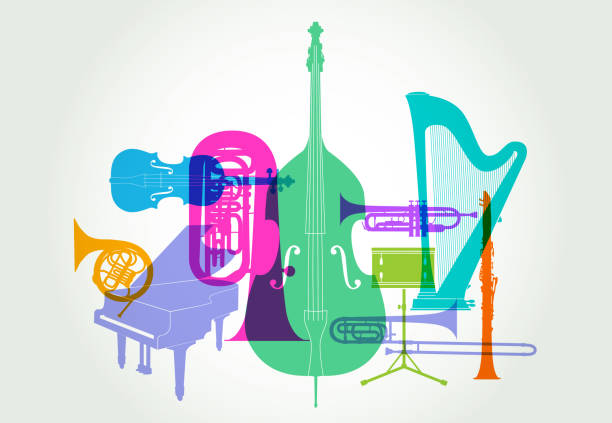Chamber music is one of the most refined and intimate forms of classical music. Often described as “the music of friends,” it brings together small groups of musicians to perform in cosy, acoustically rich settings. In contrast to the grandeur of orchestras, chamber ensembles rely on personal expression, trust, and close collaboration between each performer. For music lovers across the UK, chamber music offers a deeply personal experience that blends history, artistry, and communication in its purest form.
This guide will explore the essence of chamber music, its history, structure, popular ensembles, and why it continues to enchant audiences worldwide.
What Defines Chamber Music?
1: Small Ensembles, Big Impact
Chamber music typically features small groups often between two to eight musicians. The most common groups include string quartets, piano trios, and wind quintets. Unlike symphonic music, where instruments blend into sections, in chamber music each musician plays a separate, independent part. This gives each player a vital role in the ensemble, demanding both technical skill and interpretative depth.
2: No Conductor, Just Collaboration
One of the most defining traits of chamber music is the absence of a conductor. This means musicians must listen closely, respond to one another, and shape the performance together in real time. The result is an intricate musical conversation where every note counts.
A Brief History of Chamber Music
1: From Royal Courts to Public Salons
Chamber music originated in the private courts of European nobility during the Renaissance. Initially, it was played in royal chambers hence the name. By the Classical period, with composers like Haydn (often called the “father of the string quartet”), Mozart, and Beethoven, the genre began to flourish.
In the 19th and early 20th centuries, chamber music became more accessible. It was no longer limited to aristocratic salons but found a place in concert halls and even domestic homes across the UK and Europe.
Popular Chamber Music Ensembles
1: String Quartet
- Instruments: Two violins, viola, cello
- Example: Beethoven’s String Quartet in C-sharp minor, Op. 131
- Known for: Deep expression and balance between voices
2: Piano Trio
- Instruments: Piano, violin, cello
- Example: Mendelssohn’s Piano Trio No. 1 in D minor
- Known for: The lyrical blending of string and keyboard textures
3: Wind Quintet
- Instruments: Flute, oboe, clarinet, bassoon, French horn
- Example: Nielsen’s Wind Quintet
- Known for: Unique timbral variety and bright character
Why Chamber Music Remains Relevant
1: Intimacy and Interaction
Chamber music concerts often take place in smaller venues churches, community halls, and music societies across the UK. This creates a close-up experience where the audience can see facial expressions, subtle gestures, and feel the dynamic energy among the musicians.
2: Educational and Professional Value
Chamber music is a key component of music education in conservatories. It sharpens listening skills, ensemble balance, and interpretive decision-making. Many professional musicians in the UK begin their careers performing in chamber ensembles.
3: Modern Adaptations
Modern composers continue to explore chamber music, often blending classical forms with contemporary themes or even jazz and folk influences. In the UK, festivals like the Wigmore Hall Chamber Music Festival celebrate both traditional and modern repertoire.
Chamber Music vs. Orchestral Music
| Feature | Chamber Music | Orchestral Music |
|---|---|---|
| Number of Musicians | 2 to 8 (sometimes more) | 30+ |
| Conductor | No | Yes |
| Setting | Small, intimate venues | Large concert halls |
| Performer Role | One per part | Multiple players per part |
| Interaction Style | Conversational | Hierarchical, led by a conductor |
Experiencing Chamber Music in the UK
Whether you’re in London or Edinburgh, many opportunities exist to experience world-class chamber music:
- Wigmore Hall (London) – Premier venue for international chamber musicians
- Royal Northern College of Music (Manchester) – Student and professional performances
- Bath Festival – Includes chamber performances in historic locations
- BBC Radio 3 – Regularly features chamber music on air and online
Tips for Enjoying Chamber Music as a Newcomer
- Listen actively – Follow how the instruments interact. You’ll notice themes being passed between players.
- Attend live – Chamber music is best experienced in person where the subtle dynamics are more impactful.
- Start with the classics – Works by Mozart, Haydn, or Schubert are melodic and accessible.
- Read the programme – Understanding the context of the piece can enhance your experience.
Visual Snapshot: Key Chamber Ensembles
| Ensemble Type | Instruments Involved | Hallmark Features |
|---|---|---|
| String Quartet | Violin (2), Viola, Cello | Balance, clarity, complexity |
| Piano Trio | Piano, Violin, Cello | Warmth, contrast between keyboard/strings |
| Wind Quintet | Flute, Oboe, Clarinet, Bassoon, Horn | Rich textures, colourful harmonies |
Final Thoughts
Chamber music offers something truly unique. Its small scale doesn’t limit its power it enhances it. For UK audiences, the tradition is alive and thriving, with countless festivals, ensembles, and schools nurturing the next generation of chamber musicians. Whether you’re new to classical music or a seasoned concertgoer, chamber music invites you to experience sound in its most conversational and expressive form.
If You Want To Read More Informative Blogs Click here [ Techchrons ]

